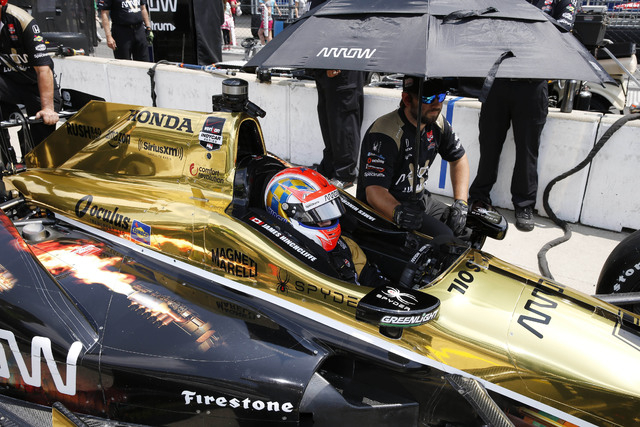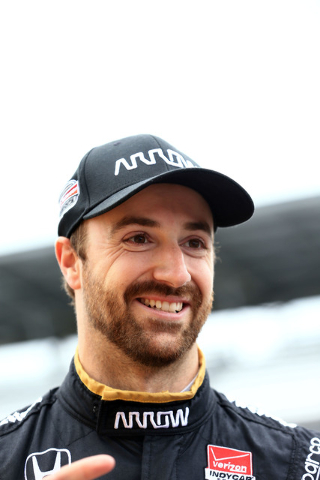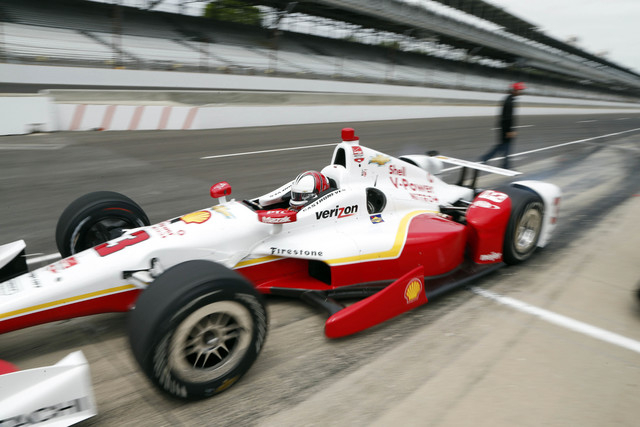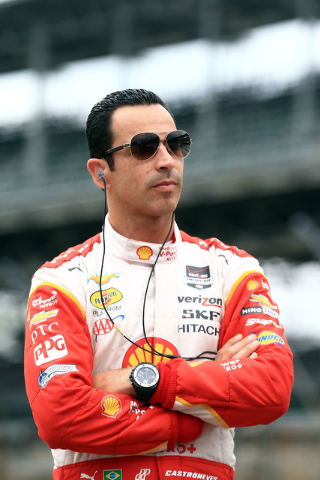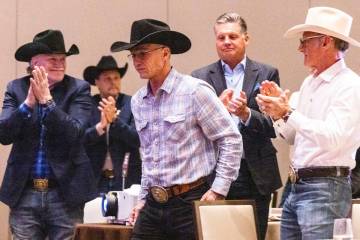Crashes send dark clouds over Indy 500
On Friday afternoon, before Jane’s Addiction takes the stage to rev up the Carburetion Day crowd at Indianapolis Motor Speedway, they will hold a preliminary automobile race in the Indy Lights division called the Freedom 100.
If this year’s Freedom 100 is anything like the last few, there will be a thrilling finish, and one of Sam Schmidt’s drivers probably will win, because one of Schmidt’s drivers almost always wins in the Lights.
Sam Schmidt is the Las Vegas racecar owner who used to be a racecar driver before a crash put him in a wheelchair.
His Indy Lights team has won a record eight series championships. Ten of the 33 drivers who posted qualifying speeds for the big one at the Brickyard, Sunday’s Indianapolis 500, drove for Schmidt in Indy Lights.
That’s nearly a third of the field.
That’s pretty amazing.
That was supposed to be what this story was about, until racecars started flying through the air at Indy during practice, and nobody seems to know why or what to do about it.
And then there was another serious crash on Monday that knocked James Hinchcliffe, Sam Schmidt’s top driver, out of the Indy 500, and probably out of the rest of the season.
Hinchcliffe, a popular Canadian who drove for Schmidt in Indy Lights and never refuses an autograph request, was speeding into Turn 3 when something broke on his car. He slammed the wall at a 45-degree angle, with a force of 125 Gs. Which, as any astronaut will tell you, is a lot of Gs.
A suspension part pierced his right thigh, went through his pelvis, entered his left thigh. He was impaled in what remained of his racecar, which had turned on its side before flipping upright again.
It took quite awhile for the track safety crew to extricate him.
James Hinchcliffe nearly bled to death.
He’s no longer in critical condition and is out of intensive care. The track crew did its job. It was touch and go for a while, though.
Then, instead of talking race strategy, or how Hinchcliffe, who has started in the front row twice and led 14 laps in last year’s race, was going to charge to the front, Schmidt was telling reporters how his top driver was lucky to be alive.
While serious crashes have always been part and parcel of the Indianapolis 500, Hinchcliffe’s wreck and the scary-looking ones that sent three-time Indy winner Helio Castroneves and a couple of other veteran drivers airborne (they weren’t injured) has cast a dark cloud over Sunday’s race.
On Tuesday morning, the day after Hinchcliffe’s brutal wall-banger, “Good Morning America” ran a story with a ominous tone, which is never good a few days before the big race.
Or is it?
Television ratings for the Indy 500 and auto racing in general — and televised sports in general — are way down.
I don’t know of anybody who wants to see somebody get hurt driving a racecar. I know of a lot of guys who would watch on TV if they knew a car or two might go flying through the air.
These skilled drivers may be magnificent men (and women), but it’s the prospect of their cars being turned into flying machines that has piqued the interest of the casual sports fan and has everybody in racing concerned.
Everybody, it seems, except the drivers.
“Every time we hop in that racecar, we don’t know if we’re going to come out in one piece. And that’s what we have to live with,” Tony Kanaan, the 2013 Indy winner, told The Indianapolis Star.
“That’s what makes us different than other people. That’s why not everybody can do this.”
So you do it with a healthy respect for what can go wrong. But you still keep your foot in it, and maybe you say a little prayer to A.J. and Mario and the other racing gods that the shiny side stays up.
“Gentleman, start your coffins!” Isn’t that what the noted sports writer Jim Murray wrote back in the day when the 500 wasn’t nearly as safe as it is now?
“It’s tough,” Kanaan said. “It’s never easy to see a dear friend of yours get hurt, or lose a friend of yours. But this is the sport we chose.”
So what’s causing these philosophical discussions and these spectacular crashes? New aerodynamic kits the cars are running this year seem to lift them off the track when they hit the wall and/or turn backward.
It’s not something that can be fixed before Sunday.
When engine boost was reduced just before qualifying runs and aerodynamic downforce was added to the cars, making them safer to drive but slowing speeds by about 5 mph, some drivers complained. One said he didn’t want to be perceived as a pansy, only he didn’t use that word.
Ed Carpenter, always among the fastest at Indy, was one of those who went rear wing over tea kettle during practice. He thinks most of the crashes occurred when drivers were trimming out their cars to run faster in qualifying.
“In race configuration, the cars are easier to drive, a little more forgiving, so I think the racing is going to be similar to what it’s been the past couple of years,” he said.
The racing at Indy the past couple of years has been spectacular, with multiple passes for the lead and hair-raising finishes.
“Hopefully we can keep it clean and everyone can keep it going in the right direction and keep all four wheels down.”
So do I, Ed. So, I would suspect, does anybody who has a grandstand seat near cruising altitude.
Las Vegas Review-Journal sports columnist Ron Kantowski can be reached at rkantowski@reviewjournal.com or 702-383-0352. Follow him on Twitter: @ronkantowski.



